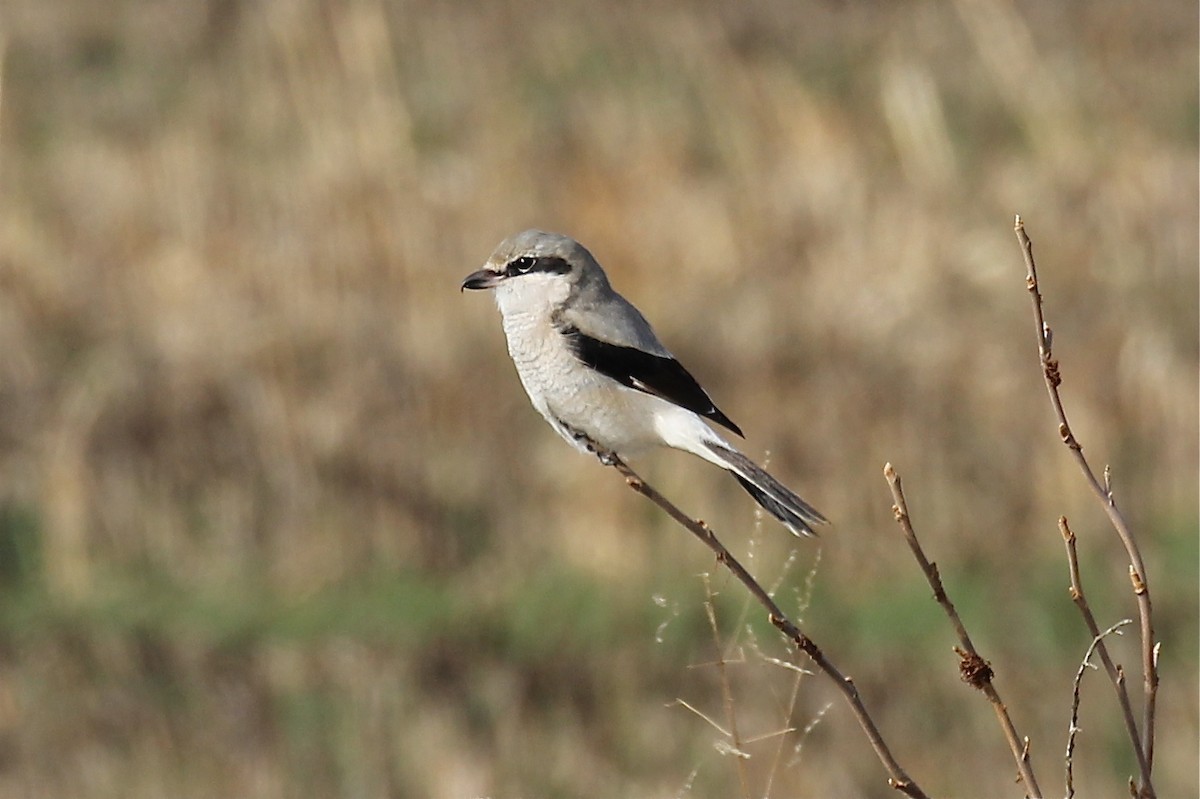Northern Shrike
A species of Typical shrikes Scientific name : Lanius borealis Genus : Typical shrikes
Northern Shrike, A species of Typical shrikes
Botanical name: Lanius borealis
Genus: Typical shrikes
Content
Description General Info
 Photo By Steve McInnis
Photo By Steve McInnis Description
The loggerhead shrike can be distinguished from the northern shrike by its smaller size, darker grey plumage and larger black face mask that covers the eye completely. It also has a shorter bill with less prominent hook. Their calls are similar. Measurements: Length: 9.1-9.4 in (23-24 cm) Weight: 2.0-2.8 oz (56-79 g) Wingspan: 11.8-13.8 in (30-35 cm) 
Size
13 - 23 cm
Nest Placement
Tree
Clutch Size
4 - 9 eggs
Incubation Period
1 brood
Number of Broods
14 - 21 days
Nestling Period
18 - 20 days
Feeding Habits
Northern Shrike predominantly consumes insects and small vertebrates, avoiding plant matter. Summer diets include arthropods; alternatively, small mammals, songbirds, and occasionally lizards comprise year-round sustenance. Tactics for predation range from scanning and ambush to impaling dead prey for storage. Insects like grasshoppers, ants, bees (detoxified), caterpillars, and various small birds and mammals (e.g., mice, voles) are common prey.
Habitat
The northern Shrike is commonly found in open areas at the periphery of the boreal forest and adjacent tundra, where trees like spruce and aspen provide dense cover amidst openings. They prefer habitats with a mix of thickets and open spaces, created by natural elements like wetlands and disturbances such as fires or logging. During winter, they inhabit partly open terrains with brushy vegetation, including clearcuts, forest edges, and overgrown fields, at various altitudes and climates across the northern regions.
Nest Behavior
Males of northern Shrike sing at potential sites and suggest preferences by offering materials. Females decide on the site and mostly build the nest, with males providing materials. After constructing the elaborate nest, females lay eggs and along with males, exhibit parental care for the eggs and young.
Nest Characteristics
Northern Shrike's nests typically are in shrubs or trees, often in a fork near the trunk, around 8 feet above ground, occasionally higher. They may reuse old hawk, jay, or magpie nests. The construction is a large, deep cup made of twigs, with insulation from feathers, animal hair, and moss. Lined with grasses and sedges, nests measure roughly 11.8 inches wide by 7.9 inches high, with an inner cup about 4.3 inches wide by 4.9 inches deep.
Dite type
Avivorous
General Info
Feeding Habits
Bird food type
Bird Feeder Type

Platform

Large Hopper
Behavior
Northern Shrike exhibit complex social behaviors, most notably during the breeding season. Both sexes participate in vocalizations, and courtship involves chasing and displaying by the males, which can include snapping or bill opening. A female signals receptivity through specific calls and wing-fluttering. Paired northern Shrike may sing in unison or conduct an aerial display. Males showcase their fitness by offering cached prey to females, who rely on them for sustenance during nesting. In instances of delayed provisioning, females express their impatience through calls or displays. Males may react submissively, vocally, or by resuming the hunt. Only females incubate, but both sexes feed the fledglings, eventually dividing brood care responsibilities post-fledging. Some juvenile northern Shrike may even start migration together, showcasing their social fidelity.
Distribution Area
Observations of wintering habitats in Idaho suggest suitable wintering territories are in demand, as northern shrikes that died in a particular area were quickly replaced. 

 Photo By Steve McInnis
Photo By Steve McInnis Scientific Classification
Phylum
Chordates Class
Birds Order
Perching birds Family
True shrikes Genus
Typical shrikes Species
Northern Shrike